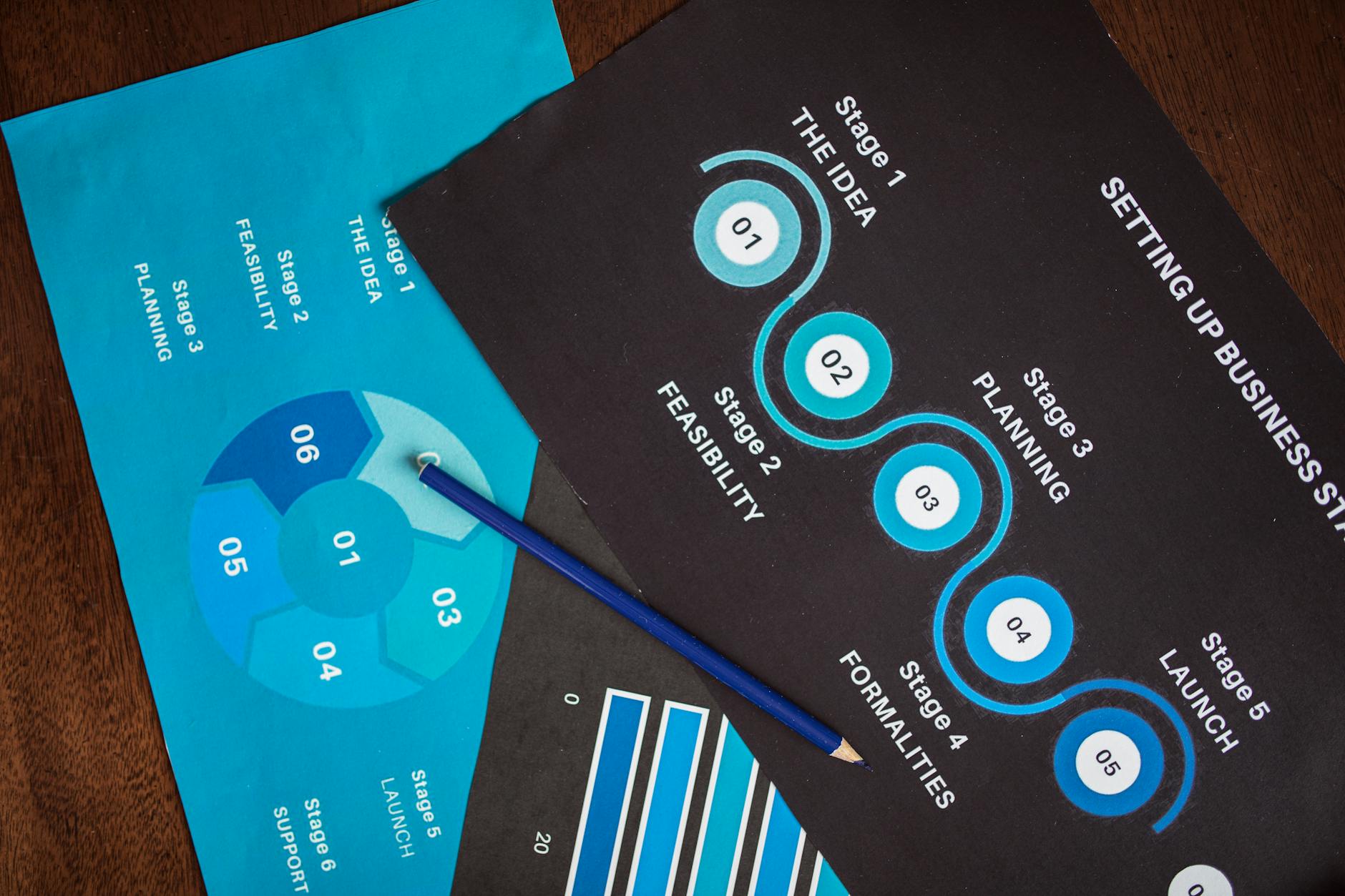The clock blinks 6:00 a.m. Your alarm cuts through the gray morning, another signal to join the parade of commuters winding their way through endless traffic and crowded trains. You move through the routine, eyes fixed on the next deadline, the next bill, always waiting for a weekend that vanishes too soon. Most people spend their working lives following an invisible script—work, consume, repeat—hoping for a sliver of freedom some distant day.
Maybe you’ve felt the frustration—too many hours lost on someone else’s business, not enough left for yourself. The longing for more time, more choices, and a life with real meaning isn’t just a dream. It’s a signal that you’re ready to challenge the old playbook. This post breaks down the hidden rules that keep so many trapped and lays out real-world tools anyone can use to finally break free.
Understanding the Rat Race
Every day millions of people wake up and enter the same cycle—wake, work, rest, repeat. It looks normal on the surface. Beneath it, though, there's a pattern so deep that most never even see it. The promise of security and success—earned by steady work and steady habits—draws crowds into the system and holds them there. The “rat race” isn’t just about working hard. It’s about spinning your wheels, locked into rules you never wrote, aiming for goals someone else set.
The Trap of Conventional Wisdom
The path most people follow isn’t random. It’s built on values passed down like family heirlooms. Seeder influences—family, teachers, TV, school counselors—drop tiny roots early. From your first loose tooth, you probably heard some version of “work hard, do well in school, get a good job, stay safe, retire happy.”
These messages seem harmless but are powerful. They narrow your idea of what’s possible, slowly building invisible walls:
-
Jobs are “safe”; risk is scary.
-
Routine is normal; ambition is extra.
-
Success means following the script.
Workplaces and social systems pile on, rewarding people who repeat the pattern. The same is true with money. Banks and financial advisers preach caution about stepping away from the ordinary. Even outside pressures from social groups or cultural norms can add to the weight, making it feel like the only real road is the one crowded with everyone else.
For a deeper look at how outside influences shape our choices and keep people aligned with mainstream values, What Is Social Control In Sociology? explains the subtle ways society guides behavior.
Breaking the Awareness Barrier
Imagine most people as fish swimming in a school. Every fish moves in sync, as if pulled by an invisible current. Only when a few break away do they realize the ocean is bigger than the school.
The first step out of the rat race is awareness. You start to notice the routine, question the rules, and wonder why things are the way they are. This new view peels back the layers built by years of “what you should do.” As this happens, you spot the fingerprints of the seeders—those little hands that shaped your take on work and life.
Think about it:
-
Your parents’ warnings about job security echo in your head.
-
School lessons reward following instructions—not questioning them.
-
The stories you see on the news and in ads show the same old path to “success.”
Seeing these patterns is freeing. No more moving with the current just because everyone else is.
For those interested in how ingrained values shape workplace behavior and ambitions, check out The Impact of Values on Performance at Work for real research and examples.
Once you notice how outside voices have set the boundaries, you can choose to draw your own map—one that actually leads somewhere worth going.
Escaping with Purpose: Mindset Shifts and Motivation
When you reach the point where doing “just enough” at a job no longer works, a fire starts to burn inside. Sometimes, the push comes as a sudden jolt—a heated argument with a boss, or a long night in the glow of your laptop, wrestling with the thought, "Is this really it?" Other times, it’s the soft pull of sunrise hikes, quiet time with family, or the whiff of salt air in places your desk can't take you. Change begins right here—when you decide to want something different, and believe that you can.
Push and Pull: The Triggers for Escape
The push out of the rat race often starts as discomfort. Picture John, who looked at the clock at 10 p.m. in a stale office and wondered when his life became email and takeout. His breaking point wasn’t dramatic—just a moment where the quiet told him he couldn’t keep going like this.
Others feel the pull of something brighter. Sarah found her motivation on a summer camping trip, roasting marshmallows with her kids. She realized those moments—unplanned, unplugged—were the ones she wanted more of.
Real stories like these show how escape usually begins with one clear moment, even if the decision builds over time. In 10 Remarkable Stories of People Who Escaped the Rat Race, you’ll find people from all walks—corporate offices, academic halls, crowded cities—who found their turning point, packed up their old scripts, and moved toward lives with more freedom and meaning.
Common push and pull triggers:
-
The breaking point: A toxic boss, health scare, or one too many missed birthdays.
-
Longing for adventure: The urge to travel, learn, or create outside a cubicle.
-
Family and relationships: Realizing life is too short for only weekends together.
Everyone’s spark looks different, but the result is the same—action begins when discomfort flips from something you tolerate to something you refuse.
Choosing Contrarian Thinking
Escaping the rat race isn’t just about running away. It takes turning your thinking on its head—questioning beliefs you may have carried since childhood. The courage to stray from the obvious path grows stronger with independent thought.
You may have been taught, “Play it safe, follow the rules, don’t risk too much.” But what if those rules aren’t for you? What if the old advice keeps you boxed in?
Start by noticing beliefs that hold you back:
-
“People like me don’t quit good jobs.”
-
“It’s too late to start over.”
-
“If I fail, it proves I wasn’t good enough.”
Spotting these thoughts is the first real win. They aren’t facts—they’re habits of mind, and habits can be broken. The mindset you need to get out of the rat race gives practical examples on letting go of outdated ideas and trusting your ability to create something new.
Ways to practice contrarian thinking:
-
Question the “normal”: If most people wouldn’t do it, consider why—and whether you might be happier doing the opposite.
-
Seek new inputs: Read or listen to people who have made bold changes and see what really drove them.
-
Challenge your inner critic: When fear speaks, ask yourself, is it true, or just loud?
Contrarian thinking makes room for new possibilities. Soon, what once felt risky starts to look reasonable, and the well-worn path begins to look like a rut, not a road. The first step is spotting your own script, then daring to write something different.
Building the Bridge: Practical Steps to Freedom
Making your escape from the rat race isn’t about one big leap—it’s about steady moves toward a new kind of security. The real secret? Small, practical changes build the bridge between where you are now and the freedom you want. This means cutting your fixed costs, launching modest income streams, and taking control of your time. Here’s how people do it step by step.
Lowering Expenses and Gaining Flexibility
Lowering your monthly costs isn’t just about penny-pinching—it’s about buying choices. Many find their first taste of freedom in trimming the fat from old spending habits. Simple moves like tracking every expense for a month can open your eyes to waste. Cancel subscriptions you no longer use. Switch to a smaller phone plan. Eat out less, cook at home more.
-
Start a budget you actually follow.
-
Prioritize must-haves over nice-to-haves.
-
Negotiate down fixed bills—shop better rates for insurance, phone, or utilities.
-
Pay off small debts first for quick wins and a psychological lift.
-
Save every windfall, no matter how small, to build a buffer against risk.
 Photo by RDNE Stock project
Photo by RDNE Stock project
Look at people who’ve escaped the grind. Mike, a former marketing manager, swapped an apartment in the city for a shared house. He cooked more, drove less, and used the savings to quit his full-time job. Another couple, the Lees, tackled their debt as a team, then saved every bonus and overtime payment—just to buy “one year of options.” These stories prove that frugality isn’t about sacrifice. It’s about creating breathing room.
For more on spending cuts that actually stick, review the most effective tips for reducing expenses and how to cut spending for good.
Experimenting with Side Income
When you need to build freedom from scratch, small income streams can be lifechanging. Start simple. Write a blog about your hobby. Offer freelance work through platforms like Fiverr or Upwork. Try selling handcrafted goods or reselling thrift finds online.
The best part? Most of these ideas have a low or even zero cost to start. You don’t need a business plan or big capital—just the courage to try, fail, and try again. The first $5 you make outside your job feels like the biggest win in the world. It proves you have options.
-
Popular low-cost side gigs include:
-
Selling on eBay or Facebook Marketplace
-
Freelance writing, design, or coding
-
Tutoring online
-
Pet-sitting or dog-walking
-
Starting a print-on-demand t-shirt shop
-
Celebrate every “small win.” Sarah, who hated her commute, started a $50-a-month Etsy shop. Soon, the extra cash covered groceries, then it paid a utility bill. Over a year, she let her side gig grow.
For further inspiration, check out this list of side hustle ideas that don't need experience and creative ways to earn extra money.
Time Management for Change
Building a path to freedom means you’ll be working with the same 24 hours as everyone else. The difference? How you protect and use your time. Productivity isn’t about doing more—it’s about doing what matters.
First, set strict daily or weekly goals. Know exactly what one “complete” task looks like before you start. Keep a running to-do list (paper, app, or sticky notes). Even on your busiest days, spend 10 minutes on your freedom project.
-
Time-saving tactics that work:
-
Block time for focused work—no multitasking, no phone.
-
Schedule “office hours” for your side hustle just like a boss would.
-
Cut out digital distractions by using site blockers or the “do not disturb” mode.
-
Let family or housemates know when you need quiet.
-
Track your time for a week to spot leaks.
-
One trick: manage your focus, not your clock. Even 20 focused minutes a day builds up.
For more ideas, review these practical time management tips or this complete guide to better time management.
Change takes smart work, not just hard work. Each small step—cutting costs, earning a few dollars, using your evenings well—lays a stone on the bridge to personal freedom and a life you own.
Entrepreneurial and Financial Literacy: Gaining True Power
Breaking from the rat race means learning the real rules of money. Most people never get taught how money works at a basic level. They keep falling into financial traps that look like “normal” life: endless payments, rising debt, and barely-there savings. The difference between staying trapped and building freedom is learning a new way to see money—what grows it, what eats it, and how to keep more of it working for you. It’s about simple discipline, smart choices, and a willingness to learn from both successes and small failures.
Seeing Assets and Liabilities Clearly
Most people think anything expensive is an asset. The truth is, not every purchase helps you grow wealth. Understanding this line—assets vs. liabilities—changes how you view every dollar.
Some common financial traps:
-
A brand-new car loses value every mile you drive and comes with a car loan—this is a liability.
-
A giant house with a big mortgage might look impressive, but if the payments squeeze your budget and property taxes go up, it’s a liability, not an asset.
-
Credit card balances that hover just below the limit drain money every month through high interest.
On the other hand, assets put money in your pocket. They either grow in value or provide steady income. Here’s how people build real wealth:
-
Buying stocks that pay dividends.
-
Owning rental property that brings in more than it costs.
-
Starting a small business or side gig that earns even a few hundred a month beyond expenses.
-
Publishing an e-book or building a website that brings residual payments.
Learning to spot these differences is what puts you in control. Every paycheck gives you a choice: feed more liabilities or buy more assets. Over time, the second option can build a safety net, then a set of real choices.
For a closer look at common asset types that actually build wealth, read The 9 Best Income Producing Assets to Grow Your Wealth. You can also scan Top 10 Income Producing Assets for 2025 for up-to-date ideas on how people just like you start small and grow.
Smart Risk and Real-World Learning
No one reaches freedom by playing it 100% safe. You don’t have to gamble everything or quit your job with no backup. Smart risk is about clear steps—experimenting, failing in small ways, and learning fast.
Little risks build real confidence:
-
Picking up a freelance project on weekends, even if you’ve never sold your skills before.
-
Cutting your spending so you can invest $50 a month in a high-yield savings account.
-
Moving to a smaller apartment so you free up cash for your first stock purchase.
-
Building a habit of learning: reading one finance tip a week, trying out a new budget, or shadowing someone who runs a business you admire.
Even tiny steps teach you massive things. Fail quickly, review what happened, and you’ll soon spot lessons you never saw in books. This is where actual power comes from—knowing how to act despite fear, and using every experiment as free training.
Don’t ignore the basics that keep your risk smart:
-
Learn how taxes work for side hustles—this saves pain at tax time.
-
Keep track of every dollar with simple tools or apps.
-
Ask people with real experience for advice—seek mentors who’ve failed, succeeded, and stayed honest about both.
For a quick guide to basic finance skills you’ll use again and again, check out Basic finance skills every entrepreneur needs. If you want a wider view on the core ideas every entrepreneur should know, scan through Financial Literacy for Entrepreneurs: Key Concepts to Understand.
Real freedom comes when you stop guessing and start learning. Big changes are built on steady practice, honest mistakes, and the confidence that you can grow your own safety net, step by step.
Designing a Life of Freedom and Purpose
Picture a life where your choices aren’t boxed in by the nine-to-five, where you decide how and where your days play out. Many dream of swapping the script—trading routine for meaning, and stress for space. With some imagination and courage, anyone can shape a path that feels lighter and more honest. Freedom and purpose aren’t reserved for the lucky few; they’re built with thoughtful choices, a willingness to question normal, and a determination to align life with what matters most.
Alternative Lifestyles and Location Freedom
 Photo by Nataliya Vaitkevich
Photo by Nataliya Vaitkevich
Freedom means something different for everyone, but today, genuine options exist that can take you far from the assembly line of modern life. These paths aren’t just for trust-fund travelers or social media influencers—they’re open to anyone willing to think differently and prioritize autonomy.
-
Digital Nomadism: Imagine working from a cafe in Lisbon, a shared house in Bali, or beside mountain lakes. With a laptop and Wi-Fi, work no longer needs a fixed address. Digital nomadism turns the whole world into your office, letting you dip into new cultures, cut living costs, and meet others who value flexibility over routine. It’s a lifestyle built on movement, variety, and the belief that work should fit your life—not the other way around.
-
House-Sitting: Want to stretch your savings or travel without draining your wallet? House-sitting gives people the chance to trade caretaking for free stays in homes around the globe. You water plants, feed pets, and in exchange, you get a place to stay—sometimes for weeks or months. It’s perfect for folks with remote work and a love of new scenery.
-
Part-Time Work: Part-time jobs can open up time and energy for hobbies, family, or new adventures. Working less often means spending less—and also needing less. The trade-off? More slow mornings, less burnout, and breathing room to think about what’s next.
-
Slow Living: Life doesn’t have to move at the speed of email. Slow living is about choosing a gentler pace. People downsize, move somewhere simpler, or let go of activities that don’t add value. They spend time on what feeds them—friends, walks, good meals, quiet hobbies. It’s not laziness; it’s choosing quality of life over a calendar jammed with obligations.
Living differently can spark questions from others. But as more people seek out these choices, they show there’s more than one way to be “successful.” If you want more inspiration on alternative routes, How Alternative Lifestyles Encourage Freedom explains how ditching tradition can open new doors.
Aligning Work with Values and Meaning
Freedom loses its shine if your work has no soul. The trap of the old system is chasing money or prestige, then waking up to find the ladder was against the wrong wall. True happiness comes from matching what you do each day with what feels right and true for you.
Here’s how to get started:
-
List your skills and joys: Write down what you’re good at and what you lose track of time doing. Overlap those with work or projects others find valuable.
-
Reflect on your values: Think about what matters most—family, honesty, adventure, learning, service. Use those values as a filter for every opportunity.
-
Say no to empty rewards: It takes guts to say no to offers that “look good on paper” but feel wrong in your gut. The path to meaning might be longer, but it’s never wasted time.
-
Seek out mission-driven work: Many companies now value people who want alignment over obedience. Look for roles that match your ideals, not just your résumé.
-
Keep checking in with yourself: Identity isn’t static. As you grow, revisit what work means for you.




